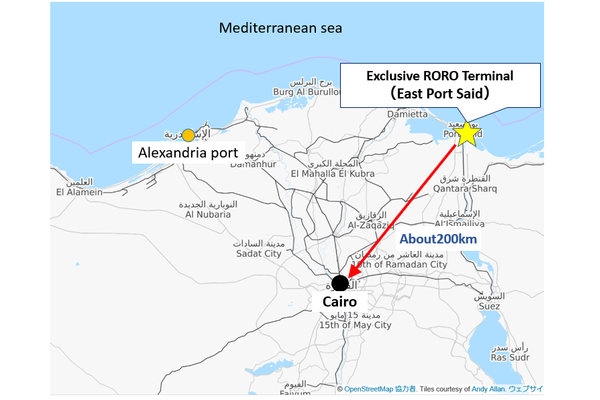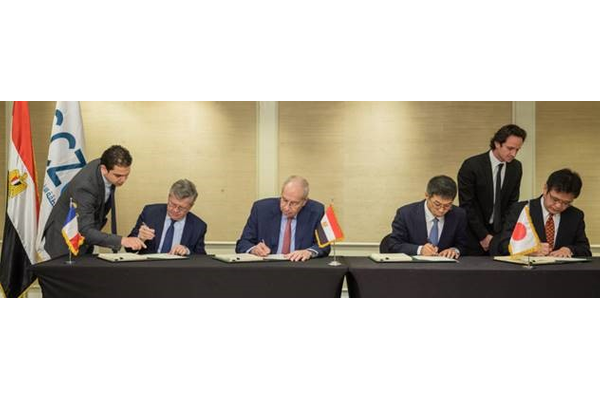

NYK, Bolloré Africa Logistics (Bolloré) and Toyota Tsusho Corporation (Toyota Tsusho) have signed an agreement with the General Authority for the Suez Canal Economic Zone to set up and operate a dedicated automotive terminal at East Port Said in Egypt.
The automotive market in Egypt is expected to expand along with population growth and economic development, and the Alexandria port, which currently handles almost all of Egypt’s vehicle imports, is a multipurpose port that sees a variety of cargo and lacks storage space. The new dedicated automotive terminal to be developed and operated by the consortium should be favorably received.
The new terminal will be Egypt’s first exclusive RORO terminal, and it will have a wharf area that allows two large Pure Car and Truck Carriers (PCTC) to berth simultaneously. The terminal will add vehicle storage space to address increasing future demand.



